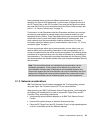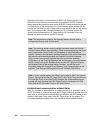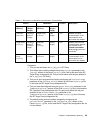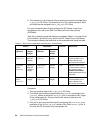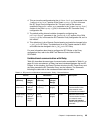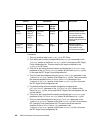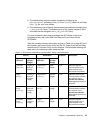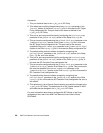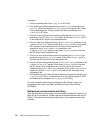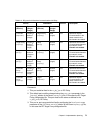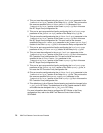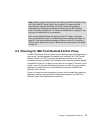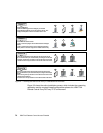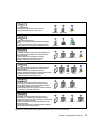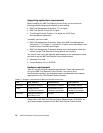
Chapter 2. Implementation planning 69
Bidirectional communication without Relay
Table 2-5 provides an exhaustive list of communication ports required to allow
the RC Controller to communicate with the RC Target located in another network
zone using a bidirectional communication type between the RC Proxies. The
comments following the table refer to the numbered notes inside the table.
Table 2-5 RC ports for bidirectional communication
Note: A Relay could, at the same time, be an initiator and a listener, as it is a
Child towards the RC Target Proxy and a Parent towards the RC Controller
Proxy in our scenario. The information provided in the Table 2-3 on page 65
and Table 2-4 on page 67 can help you to understand all scenarios.
If the Relay is a Child listener and a Parent listener, get the Child listener
communication ports in Table 2-3 on page 65 and the Parent listener ports in
Table 2-4 on page 67. Conversely, if the Relay is a Child initiator and a Parent
initiator, get the Child initiator communication ports in Table 2-4 on page 67
and the Parent initiator communication ports in Table 2-3 on page 65.
Source Destination Protocol Description
Type
(Service)
Port
(Single /
Range)
Type
(Service)
Port
(Single /
Range)
Controller
(eqnrsmai)
random or
defined
1
(single)
Tar get Pr oxy
(rcproxy)
9494
2
(single)
TCP Started at request.
Communication in the
same network zone.
No firewall rule needed.
Target Proxy
(rcproxy)
random or
defined
3
(single or
range)
Controller
Proxy
(rcproxy)
defined
4
(single)
TCP Started at service time.
Communication between
two network zones.
Firewall rule needed.
Controller
Proxy
(rcproxy)
random or
defined
5
(single or
range)
Tar get Pr oxy
(rcproxy)
defined
6
(single)
TCP Started at service time.
Communication between
two network zones.
Firewall rule needed.
Controller
Proxy
(rcproxy)
random
(single)
Ta r ge t
(eqnrcmai)
2501
7
(single)
TCP Started at request.
Communication in the
same network zone.
No firewall rule needed.



